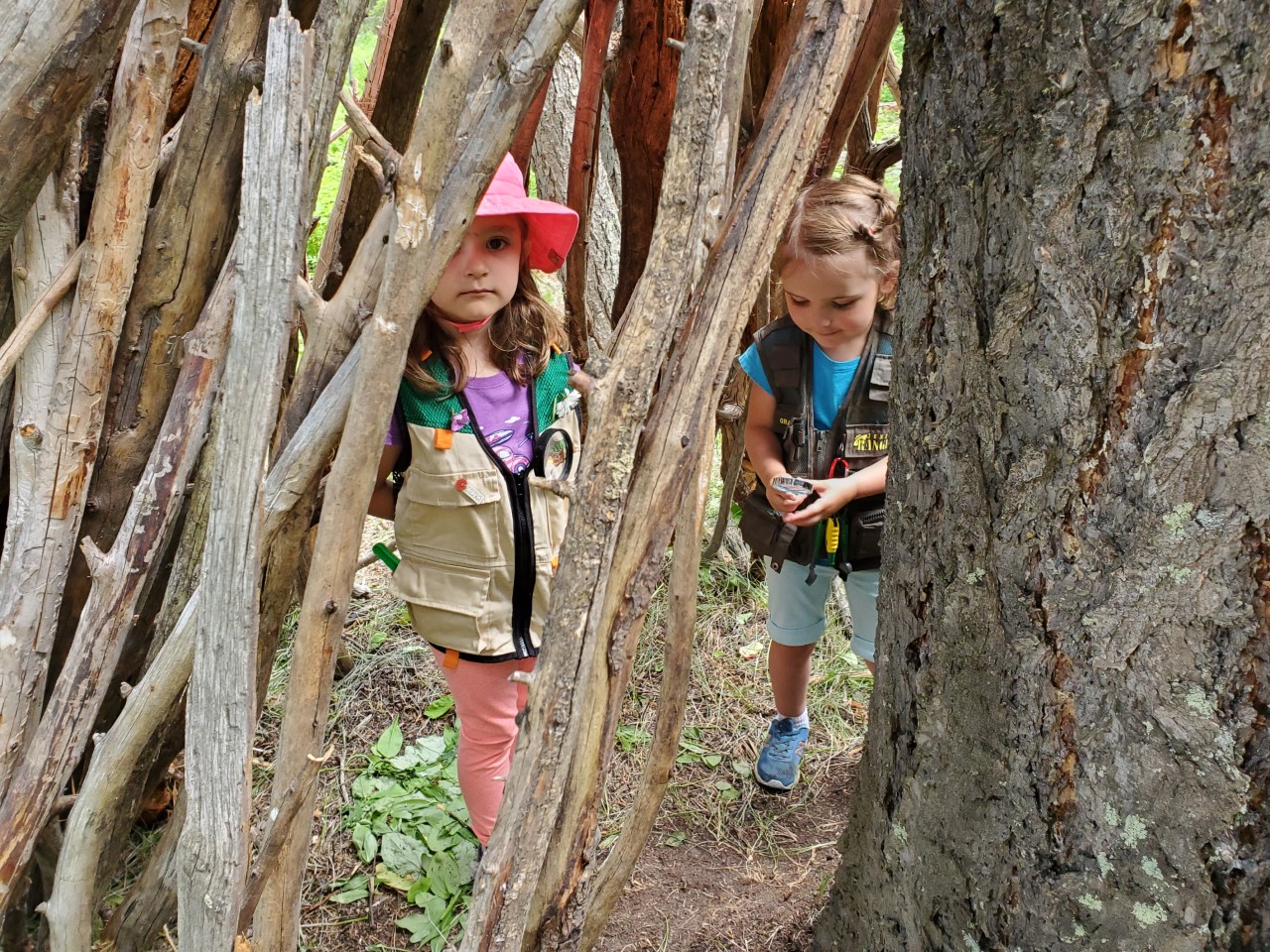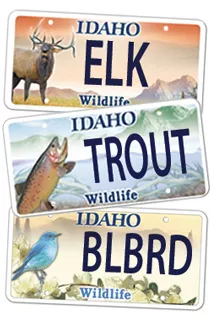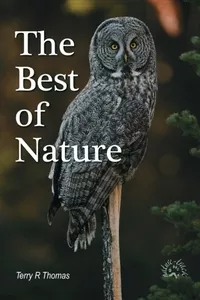Staying Active While Staying at Home

Kids will find plenty to do at home if we will let them explore their own backyards in new ways.
Now that “Stay at Home” is a governmental degree for Idahoans and not just a request, many people are going to get far more familiar with living rooms, dens and backyards than they ever knew possible. IF we aren’t prepared with some ideas though, this familiarity can lead to boredom very quickly. Homes, and particularly backyards, don’t have to be prisons for the next several weeks though. Here are some suggestions to help us stay busy.
The National Wildlife Federation has a backyard habitat program where you can certify your yard as habitat for wildlife. You can find many ideas on their website, https://www.nwf.org/garden-for-wildlife/create. Wildlife need three basic things in order to flourish: food, water and shelter. Now would be a great time to design or re-design your yard to incorporate features and native plants that will attract and hold wildlife, especially birds.
Bird feeding is another great activity that the whole family can enjoy. Clean your feeders before putting them out following these guidelines from Cornell University’s All About Birds website: “To clean your feeder, take it apart and use a dishwasher on a hot setting or hand wash either with soap and boiling water or with a dilute bleach solution (no more than 1 part bleach to 9 parts water). Rinse thoroughly and allow to dry before refilling.”
If you don’t have feeders, building some is a great activity that can be done indoors and one that kids can participate in. If you are creative, you will find that you likely already have the materials on hand. Anything from milk jugs to old plates to logs can work. Check the internet or Pinterest for more ideas than you can create in a lifetime.
Along with feeders, consider creating a birdbath. Water attracts birds almost as well as feeders. One of my favorites was a large flat sandstone rock that I hollowed out using my angle grinder. It was natural-looking and worked well and the birds loved it. However, even a large dishpan, cookie sheet or just about anything else that can hold a shallow “pond” of water will work.
Along with a birdbath, the sound of dripping water attracts birds. Make a dripper by drilling a tiny (very tiny) hole in the lid of a 2-liter pop bottle or something similar. Fill the bottle and hang it upside down over the bird bath. If you can attach a little dripline hose, birds will land on the hose and drink from the dripping water.
Once the feeders are up and the bird action begins, establish a blind (called a hide in Great Britain) and slowly move it closer each day. You can spend hours in the blind watching and photographing birds while they go about their business.
Lead kids on a backyard safari. This can be a scavenger hunt or a “see what’s out there” adventure. Remember, since kids are closer to the ground, things down low hold more interest for them. Looking under rocks, logs and among roots often yields unexpected treasures (watch out for spiders and hornets though).
Trying to do something positive to combat the Covid-19 side-effect of boredom, I created a new section on my website, nature-track.com. Go to the home page and click on the tab labeled, For Parents and Teachers. It has a lot of ideas and resources.
We will all get through this, but until then we need to support each other as best we can.
Help Idaho Wildlife
When we traveled across the state in October 2017, most of the vehicles we saw using the wildlife management areas did not have wildlife plates. Buying wildlife plates is a great way for non-hunters and hunters alike to support wildlife-based recreation like birding.
C'mon folks, let's help Idaho's wildlife by proudly buying and displaying a wildlife license plate on each of our vehicles!
See below for information on Idaho plates. Most states have wildlife plates so if you live outside Idaho, check with your state's wildlife department or vehicle licensing division for availability of state wildlife plates where you live.
And tell them that you heard about it from Nature-track.com!

Wildlife License Plates
Great news! as of 2024, there are three NEW designs for license plates. They still are bluebird, cutthroat trout and elk, but they are beautiful.
Idaho Wildlife license plates provide essential funding that benefits the great diversity of native plants and wildlife that are not hunted, fished or trapped—over 10,000 species or 98% of Idaho’s species diversity. Game species that share the same habitats (such as elk, deer, antelope, sage-grouse, salmon, trout) also benefit from these specialty plates.
No state tax dollars are provided for wildlife diversity, conservation education and recreation programs. Neither are any revenues from the sale of hunting or fishing licenses spent on nongame species. Instead, these species depend on direct donations, federal grants, fundraising initiatives—and the Idaho Wildlife license plates.
Both my vehicles have Bluebird Plates. I prefer the bluebird because the nongame program gets 70 percent of the money from bluebird plates, but only 60 percent of the money from elk and trout plates - 10 percent of the money from elk plates supports wildlife disease monitoring and testing programs (to benefit the livestock industry) and 10 percent from cutthroat plates supports non-motorized boat access.
Incidentally, in 2014, the Idaho Legislature denied the Department of Fish and Game the ability to add new plates or even to change the name of the elk and cutthroat plates (very specific) to wildlife and fish plates, a move that would have allowed for changing images occasionally and generating more revenue. It would seem that they believe that we Idahoans don't want a well funded wildlife program.
I think it is time we let the Legislature know that Idahoan support wildlife funding and that we would like to see these generic plates come to fruition.

"WOW. What a phenomenal piece you wrote. You are amazing." Jennifer Jackson
That is embarrassing, but actually a fairly typical response to my nature essays. Since The Best of Nature is created from the very best of 16 years of these nature essays published weekly in the Idaho Falls Post Register (online readership 70,000), it is a fine read. It covers a wide variety of topics including humorous glimpses of nature, philosophy, natural history, and conservation. Readers praise the style, breadth of subject matter and my ability to communicate complex and emotional topics in a relaxed and understandable manner.
Everyone can find something to love in this book. From teenagers to octogenarians, from the coffee shop to the school room, these nature essays are widely read and enjoyed.
Some of the essays here are my personal favorites, others seemed to strike a chord with readers. Most have an important message or lesson that will resonate with you. They are written with a goal to simultaneously entertain and educate about the wonderful workings of nature. Some will make you laugh out loud and others will bring a tear to the eye and warm your heart.
Readers Write:
"You hit a home run with your article on, Big Questions in Nature. It should be required reading for everyone who has lost touch with nature...great job!" Joe Chapman
"We enjoyed your column, Bloom Where Planted. Some of the best writing yet. The Post Register is fortunate to have your weekly columns." Lou Griffin.
To read more and to order a copy, click here or get the Kindle version
Copies are also available at:
Post Register
Island Park Builders Supply (upstairs)
Barnes and Noble in Idaho Falls
Harriman State Park, Island Park
Museum of Idaho
Valley Books, Jackson Wyoming
Avocet Corner Bookstore, Bear River National Wildlife Refuge, Brigham City, Utah
Craters of the Moon National Monument Bookstore, Arco, Idaho
Wildlife License Plates
Great news! as of 2024, there are three NEW designs for license plates. They still are bluebird, cutthroat trout and elk, but they are beautiful.
Idaho Wildlife license plates provide essential funding that benefits the great diversity of native plants and wildlife that are not hunted, fished or trapped—over 10,000 species or 98% of Idaho’s species diversity. Game species that share the same habitats (such as elk, deer, antelope, sage-grouse, salmon, trout) also benefit from these specialty plates.
No state tax dollars are provided for wildlife diversity, conservation education and recreation programs. Neither are any revenues from the sale of hunting or fishing licenses spent on nongame species. Instead, these species depend on direct donations, federal grants, fundraising initiatives—and the Idaho Wildlife license plates.
Both my vehicles have Bluebird Plates. I prefer the bluebird because the nongame program gets 70 percent of the money from bluebird plates, but only 60 percent of the money from elk and trout plates - 10 percent of the money from elk plates supports wildlife disease monitoring and testing programs (to benefit the livestock industry) and 10 percent from cutthroat plates supports non-motorized boat access.
Incidentally, in 2014, the Idaho Legislature denied the Department of Fish and Game the ability to add new plates or even to change the name of the elk and cutthroat plates (very specific) to wildlife and fish plates, a move that would have allowed for changing images occasionally and generating more revenue. It would seem that they believe that we Idahoans don't want a well funded wildlife program.
I think it is time we let the Legislature know that Idahoan support wildlife funding and that we would like to see these generic plates come to fruition.